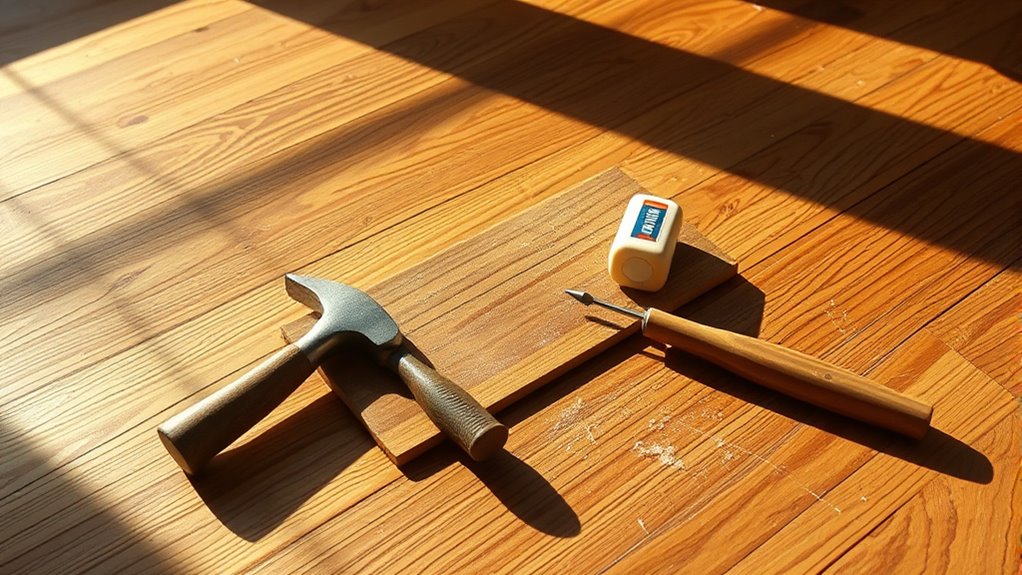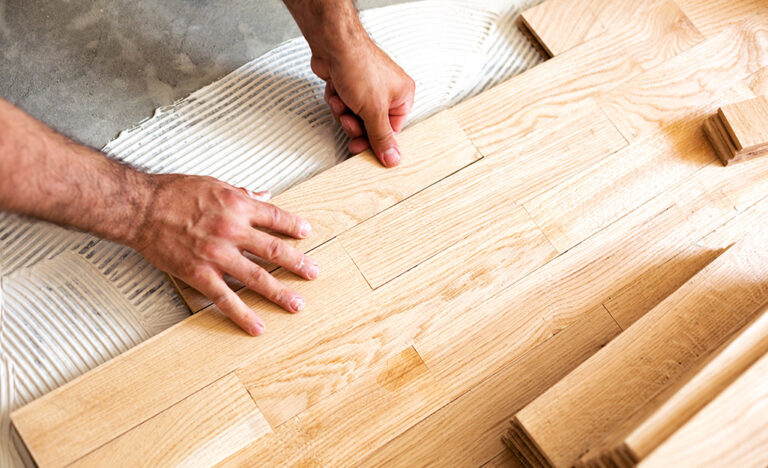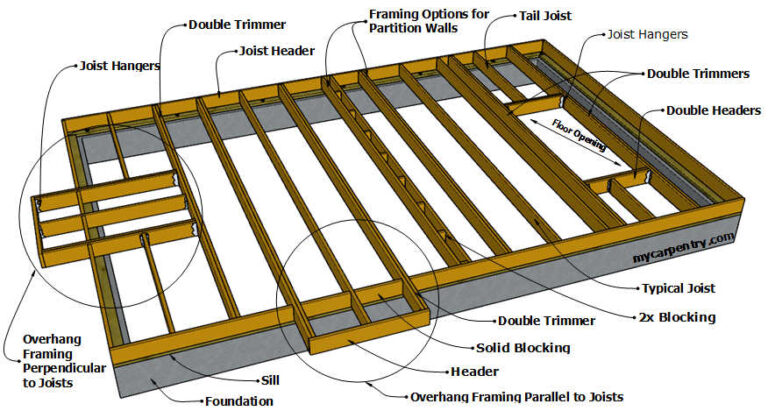To fix a creaky floor, first locate the noisy spots by walking and listening carefully. Tighten any loose floorboards or joists using screws or nails, making certain not to damage the surface. You might need wood shims or adhesive to fill gaps caused by wood expansion or contraction. Check below the pavimento if accessible, securing the subfloor to joists or adding support if needed. Taking these steps will help quiet your floor, and you can explore more detailed methods to guarantee lasting results.
Identifying the Causes of Floor Creaks
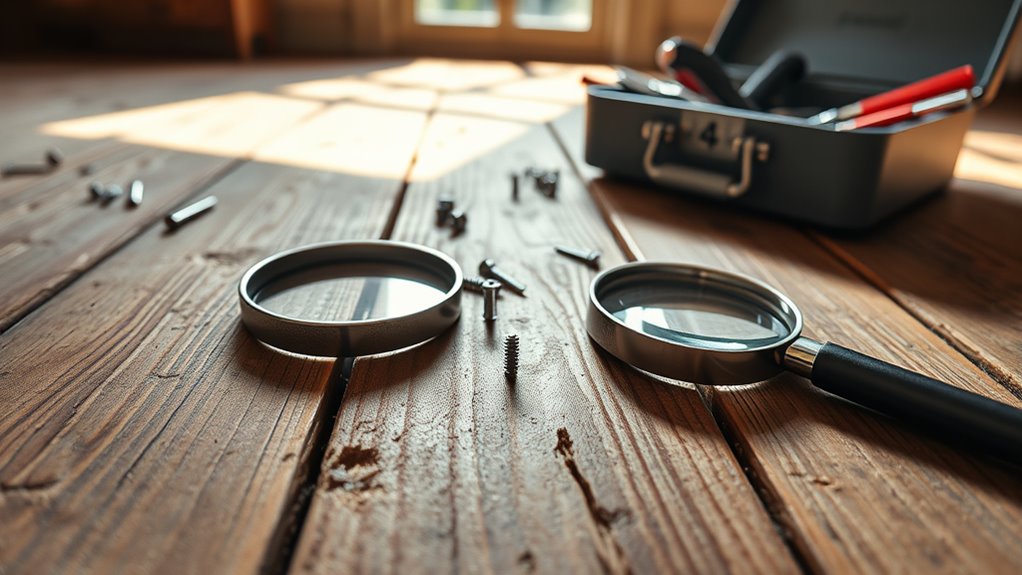
Before you can fix a creaky floor, you need to understand what’s causing the noise. Most often, creaks come from floor movement—when wood boards flex or rub against nails or joists beneath. Wood expansion plays a big role, too. As humidity changes, wood swells or shrinks, causing gaps or pressure points that lead to squeaks. You’ll want to inspect the floor for loose boards, nails that have popped up, or uneven joists. Sometimes, the subfloor might shift slightly, increasing friction and noise. Identifying these causes helps you target the exact problem without wasting effort. When you grasp how floor movement and wood expansion contribute, you’re free to address the root issue directly, making your repair effective and lasting.
Tools and Materials Needed for Repair
Although fixing a creaky floor might seem straightforward, having the right tools and materials on hand will make the process much smoother and more effective. You’ll want a selection of screwdriver types—flathead and Phillips—to handle different screws securing your floorboards. A cordless drill with screwdriver bits can speed things up if you have many screws to tighten. Floor adhesive is vital for securing loose boards or reinforcing joints; choose one designed for wood flooring to guarantee a strong bond. Besides these, keep wood shims, finishing nails, and a hammer nearby. A pry bar or putty knife will help you lift boards gently if needed. Having these tools ready means you can tackle the repair efficiently and regain your floor’s quiet freedom.
Step-By-Step Guide to Fixing Creaks From Above
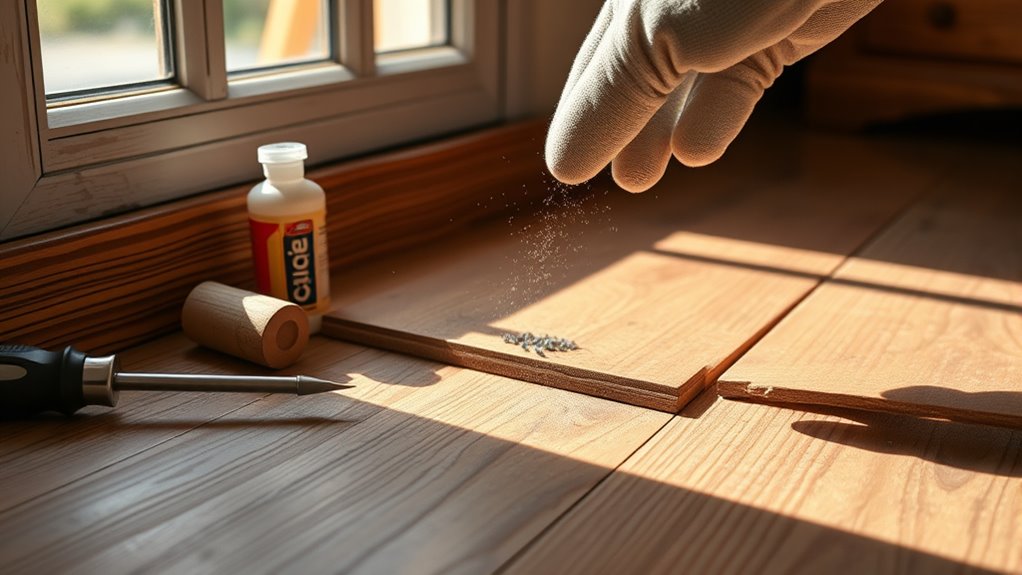
When you’re ready to fix creaks from above, start by identifying the exact spots where the floor squeaks. This helps target your floor repair efforts and guarantees effective noise reduction. Here’s a straightforward approach:
- Locate and mark each creaky area by walking over the floor and listening carefully.
- Apply wood shims or screws gently into the gaps between floorboards and joists to tighten loose boards without damaging the surface.
- Test for noise by walking over treated areas to confirm the squeaks have diminished or stopped.
This method lets you regain freedom from annoying floor creaks without tearing up your floor. By focusing on these precise steps, you’ll efficiently reduce noise and enjoy a quieter home.
Addressing Creaks From Below the Floor
If fixing creaks from above doesn’t fully solve the problem, the noise might be coming from below the floor. Start by gaining access to the crawl space or basement under the floor. Conduct a thorough subfloor inspection to identify loose or damaged components within the floor structure. Look for gaps where the subfloor meets the joists or any signs of movement that cause friction. Tighten loose screws or nails securing the subfloor to the joists, and replace any damaged fasteners. If the subfloor is warped or deteriorated, consider sistering joists or adding blocking between them to reinforce stability. Don’t forget to check for debris or structural issues that could worsen creaks. Addressing the problem beneath the floor gives you the freedom to eliminate persistent noises effectively and restore peace to your living space.
Preventive Measures to Keep Floors Quiet
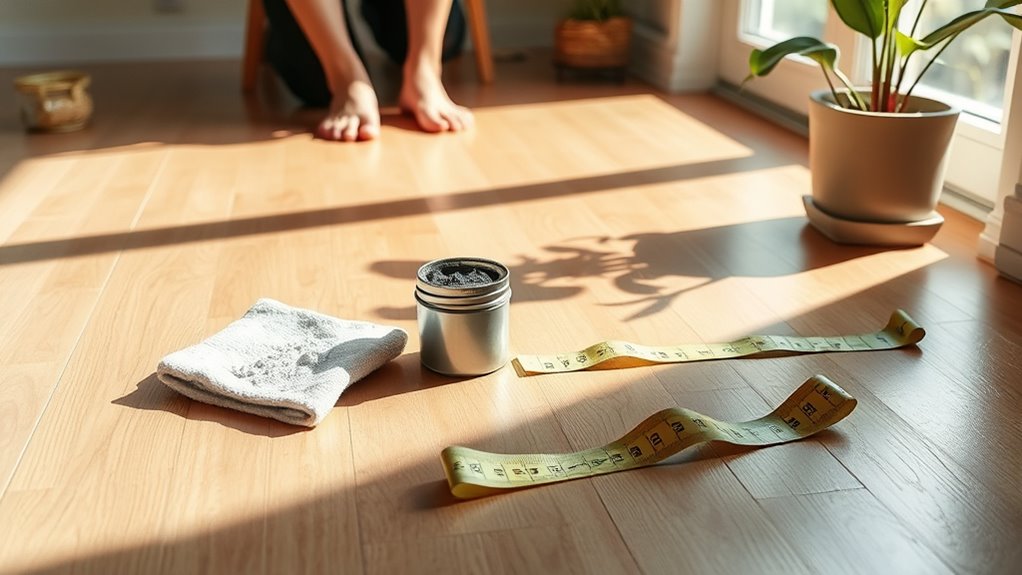
To keep your floors quiet over time, it’s essential to take preventive steps before creaks develop. Regular floor maintenance helps you avoid costly repairs and keeps your space peaceful. Here are three key actions:
- Inspect and tighten fasteners: Periodically check nails or screws holding floorboards and joists. Loose fasteners are a primary cause of creaks.
- Apply soundproofing techniques: Use felt pads or soundproof mats beneath floorboards to reduce friction and noise.
- Control humidity levels: Wood expands and contracts with moisture changes, leading to gaps and squeaks. Maintain consistent indoor humidity to minimize this.

